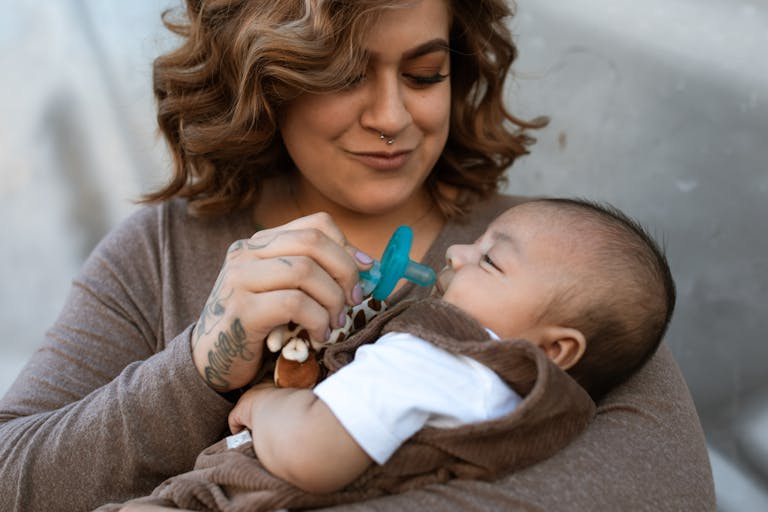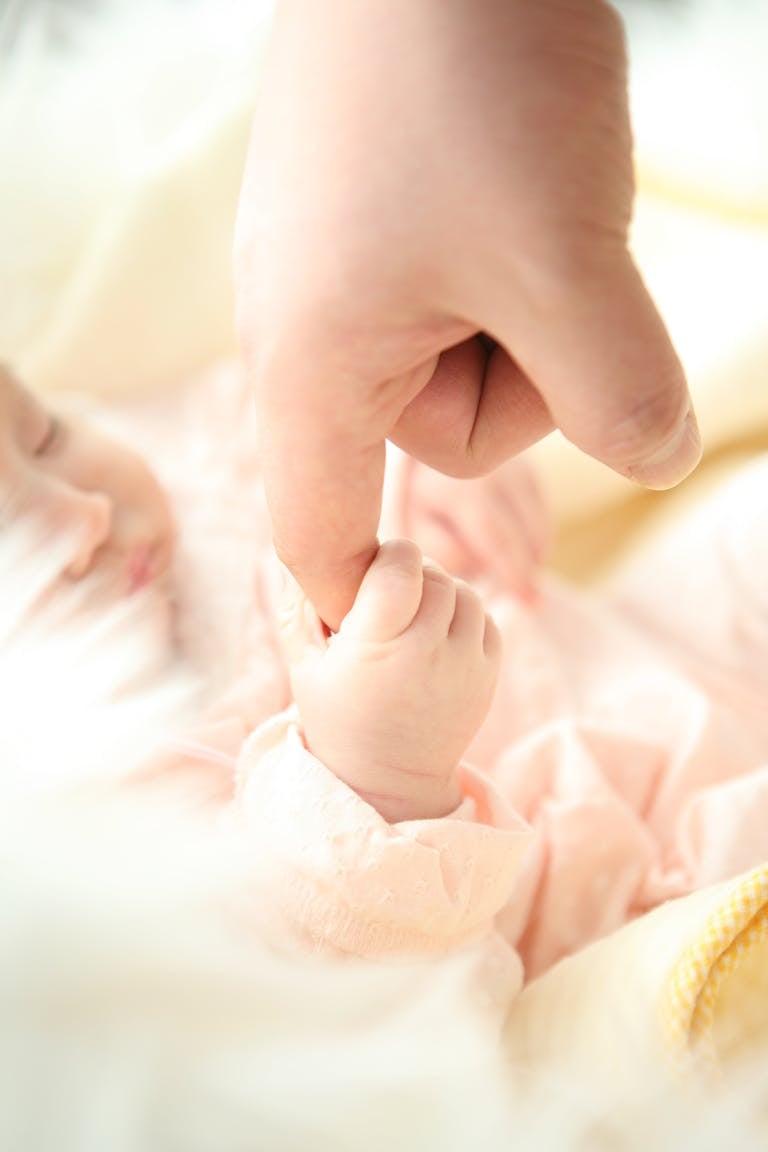At 11 months, a baby’s world seems to expand overnight—one day, you’re watching those uncertain wobbles near the sofa, and suddenly, a cascade of new skills and preferences flood daily life. Parents wrestling with the challenge of balancing curiosity and caution are not alone in wondering when to intervene or just let their child explore. It’s entirely normal to question whether your 11 month old baby’s weight is on track, if biting and mouthing are signs of teething or just play, or why separation at bedtime has become such a drama. As this stage brings unpredictable sleep, evolving feeding routines, and those intense moments of big feelings and squeals, one thing stays constant: your desire to support development without stifling independence. Here, discover key changes, from physical leaps and new mental connections to practical ideas on safety, nutrition, and nurturing habits that will empower every caregiver of an 11 month old baby.
Key developmental leaps at 11 months
Can you picture your 11 month old baby experimenting with balance as they pull up to stand, or using a fingertip-and-thumb pinch to grasp rice puffs with laser focus? Coordination doesn’t just happen; it’s the byproduct of repeated micro-trials, sometimes messy, sometimes triumphant. Motor skills—both gross motor skills (crawling, cruising, barely-there steps) and fine motor abilities (pinching, stacking, clapping)—flourish rapidly around this time.
Suddenly, games like peekaboo or hiding toys awaken clear signs of object permanence—the understanding that something continues to exist even when unseen. Cognitive flexibility leaps ahead with simple puzzles, picture books, and a fascination for everything that produces sound or lights up with cause and effect. Language development, although often subtle, can show itself in babbles that mimic the rhythm of adult speech, responding to instructions such as “come here” with a turn of the head or a delighted giggle. Words like “mama” or “dada” begin to carry intention, especially when paired with gestures (waving, pointing, clapping).
Promoting independence while supporting learning
This phase of life is a paradox—your 11 month old baby wants to be brave and autonomous, yet seeks your reassurance within arm’s reach. As mobility increases, so does curiosity. Allowing exploration encourages self-confidence and feeds a developing sense of agency, but a secure environment—physically and emotionally—remains foundational. When adults cheer each attempt, provide gentle “yes, try it!” nudges, and create spaces free of hazards, they build a cushion that cushions mistakes, amplifies successes, and helps the baby calibrate risk and ability.
Growth and physical development
An 11 month old baby’s weight and length still quietly creep upward, but the dramatic jumps of earlier infancy slow down. What becomes more noticeable? Muscle definition—even in those soft little thighs—as cruising or standing exercises entire muscle groups. Watch the stability improve week by week, from sitting solo to climbing over a pillow obstacle or attempting to “walk” with just one adult hand for support.
Gross motor feats: standing, crawling, and those legendary first steps
It’s fascinating—some babies lurch confidently from couch to table, while others remain content to perfect their crawl. This is not a race: the spectrum of motor development is vast and normal. Encouraging safe furniture for support, allowing barefoot “grip” for developing balance, and using toys like push-carts foster autonomy and stability. Still, don’t be surprised if progress happens in bursts, often after a quiet period of observation.
Fine motor finesse: from pincer grasp to self-feeding
Spoons flying, peas pinched and tasted, favorite toys rotated between chubby fingers—at 11 months, fine motor skill development is front and center. Look for increasingly coordinated actions: transferring objects between hands, stacking rings (even if just two at first), turning pages in a board book. Such “messy” activities build hand-eye coordination and future writing abilities, even if today’s project ends with more food on the floor than in the mouth.
Cognitive growth: curiosity, senses, and playful learning
A surge of curiosity drives your 11 month old baby to investigate, manipulate, and sometimes attempt to “taste” everything within reach. Tactile experiences now matter—soft, squishy, textured, noisy. The brain’s wiring is busy connecting input from vision, sound, scent, and touch, forging critical pathways for all future learning.
Early pretend play emerges: offering you a cup with a sly smile, “talking” into a toy, mimicking the combing of hair on a doll or themselves. Each “let’s try together” moment creates space for motor memory and problem-solving. Sensory play, with safe objects and adult supervision, enhances stimulation and calms fussiness.
Emotional and social development
Separation anxiety—why now? It’s the sign of strong emotional bonds, not a step backward. Your 11 month old baby knows who their main caregivers are and can feel unsettled when they leave. Short moments apart, followed by reunion and comfort, reinforce a sense of safety and attachment.
This is the age of imitation. Babies read adult faces, copy smiles, mirror frowns. Empathy isn’t a word in their vocabulary, but a sudden cry at seeing another child upset reveals its roots. Comforting touch, singing, or simply sitting beside them communicates: “Your feelings matter; I’m here.”
Communication and the art of understanding
Have you noticed how babbling changes? Varied consonant-vowel combinations appear, and tone fluctuates as if to “ask” a question or make a demand. For the 11 month old baby, understanding spoken language generally outpaces the ability to say actual words.
Inspired by daily narration (naming, labeling, singing), babies make links more quickly—point at the dog, say “bow-wow,” clap in delight. Even responses like shaking the head for “no” are meaningful milestones. Consistent, positive interaction builds a growing vocabulary and encourages more sound imitation.
Daily routine and enriching play
Predictability brings comfort. Daily structure—routine feeding, regular naps, dedicated play and quiet exploration—translates into a sense of order that helps the 11 month old baby manage transitions. Yet, flexibility is key; not every day will look the same.
Toys and activities tailored for learning
Rotate toys every few days to prevent boredom. Prioritize objects like stacking cups, ring sorters, musical instruments (like a soft drum), or push toys. Simple imitation games, such as “pretend cooking” with safe utensils, foster both physical and social skills. Reading books together, even for a few minutes, stimulates language, introduces rhythm, and strengthens bonds.
Encouraging small milestones, celebrating autonomy
Invite your 11 month old baby to participate in tidying up toys, share snacks from a divided plate, or choose between two shirts. Each small choice or tiny task reinforces self-confidence and introduces early decision-making, all within your reassuring proximity.
Nutrition and feeding at 11 months
Milk and the transition from bottle or breastfeeding
At this stage, the 11 month old baby’s menu combines breastmilk or formula—usually 500–700 ml daily—with a growing array of solid foods. Cow’s milk remains off-limits as a main drink (due to low iron content and risk of allergy), while follow-up formula or continued breastfeeding ensures necessary calcium and vitamins.
Solid foods: introduction, autonomy, and safety
Solid meals, usually two to three times daily, can include:
- Cooked vegetables (e.g., carrot sticks, pumpkin, peas) cut into bite-sized pieces
- Small cubes of ripe fruits like banana, pear, or papaya
- Gently shredded chicken or well-cooked lentils
- Delicate strips of toast or soft rice
- Well-cooked pasta pieces
Variety in texture and taste is important; repeated exposure helps build acceptance. For vegetarian families, consultation with a pediatrician will ensure iron and B12 needs are met (via pulses, green veggies, or supplements if required).
Finger foods are encouraged, but always with supervision—foods that are round, hard, or sticky (whole grapes, nuts, raw carrots) present choking dangers. Self-feeding builds agency and, once again, those precious fine motor milestones.
Sleep: patterns, routines, and gentle troubleshooting
A restful night: every parent’s dream, not always reality. Your 11 month old baby generally needs 10–12 hours of sleep at night plus one or two naps by day. The circadian rhythm—the natural body clock—starts asserting itself, so consistent bedtime rituals offer security and trigger sleep readiness.
Bedtime routines and common sleep questions
Wind-down rituals might include a warm bath, gentle rocking, soft music or lullabies, and dim lighting. If separation anxiety, teething, or new skills (like standing) interrupt restful nights, offer calm reassurance without stimulating play. Short, repeated interventions at night (“I’m here, go back to sleep”) help your baby learn to settle quickly.
Safe sleep: practical tips for parents
Ensure a firm mattress, remove plush toys or loose blankets from the crib, and maintain a comfortable room temperature. These habits decrease risk for Sudden Infant Death Syndrome (SIDS) and foster safer independent sleep.
Everyday health and safety
Regular infant health check-ups track growth patterns, immunization status, and overall development, reassuring parents and allowing early detection of any issues. Oral hygiene—a gentle brush with a soft toothbrush or finger cloth—can be started whether there are teeth or just gums showing. Use a smear of fluoride toothpaste if recommended by your pediatrician.
Teething: expectations and relief
Premolars or other teeth may erupt any time now, causing red cheeks, drooling, swollen gums, and occasional crankiness. Massage with a clean finger, offer cooled (not frozen) teething rings, and distract lovingly with singing or extra cuddles. Most discomfort is temporary, but persistent distress in the 11 month old baby should be brought up during medical visits.
Oral thrush (muguet)
Muguet, or oral thrush, appears as white patches inside the mouth and can result from an overgrowth of Candida albicans, especially after antibiotics or in humid environments. Maintaining strict hygiene—sterilizing bottles, pacifiers—and prompt consultation for antifungal medication if needed, prevents recurrence.
Creating a safe home for busy explorers
When an 11 month old baby becomes mobile, hazards abound—furniture corners, staircases, sockets, household chemicals. Secure heavy items, install stair gates, pad sharp edges, and keep tiny objects well out of reach. Step back sometimes and watch your baby test limits; shadow them, but let discovery, not fear, be the memory that remains.
Outings? Car seats—always rear-facing, properly fixed—are non-negotiable. Shade your baby from intense sun and provide seasonal clothing. Emergency contacts and a basic first-aid kit should be part of every caregiver’s toolkit.
Supporting every unique journey
Comparison is tempting, progress unpredictable. Every 11 month old baby charts a unique path—some sprint into toddlerhood, others inch along. All deserve encouragement, celebratory high-fives, and a patient embrace of quirks and preferences. Persistent worries about weight, speech, walking, or unusual behavior are a clear invitation: reach out to professionals for tailored advice.
Key Takeaways
- An 11 month old baby is on the brink of even greater independence—expect exploration, bursts of energy, and unpredictable new skills.
- Offer two to three solid meals per day, prioritizing a mix of age-appropriate finger foods and continued formula or breastmilk, while avoiding potential choking hazards.
- Encourage self-feeding, stacking, crawling, cruising, and free movement for holistic development—support is always close, but autonomy grows with each attempt.
- Consistent sleep and feeding routines foster comfort and predictability, helping manage sleep regression, teething, and mood swings.
- Babyproof your spaces as your 11 month old baby explores; active supervision and prevention keep little adventurers safe.
- Support language, fine motor, and social skills with books, toys, music, daily conversation, and warm emotional presence.
- If any concerns arise regarding development, weight, or emotional regulation, connect with your pediatrician for guidance informed by medical expertise. For additional support and free health questionnaires, parents can also try the application Heloa.
Questions Parents Ask
What finger foods can I safely give my 11 month old baby?
At this age, offering soft, bite-sized pieces is ideal—think of well-cooked carrot, pumpkin, peas, or cubes of ripe banana and papaya. Shredded chicken, thoroughly cooked lentils, sliced paneer, and small toast strips are often appreciated too. Supervise every meal, avoid sticky or hard foods like whole grapes or nuts to minimise choking risks, and introduce a variety of textures and colours.
What is the average weight for an 11 month old baby?
Usually, the average weight for an 11 month old baby falls between 8.5 and 10 kg (19–22 pounds). But substantial variation is normal. Consistency in growth matters more than single measurements. If sudden changes or concerns appear, seek advice during routine medical check-ups.
How can I encourage my 11 month old baby to start walking?
Support early walking by arranging stable furniture within reach, offering your hands for supported steps, and letting your 11 month old baby try push toys or safe cruising barefoot around the home. Each child has their own rhythm; patient encouragement and regular practice bring confidence, without pressure to reach this milestone at the same pace as others.









